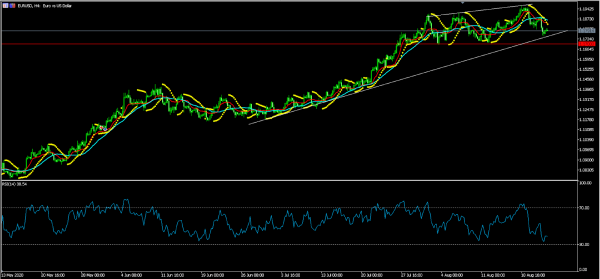The New Zealand dollar was little changed as traders reacted to the weak retail sales numbers from the country. According to the statistics bureau, the headline retail sales dropped by 14.6% in the second quarter after they dropped by 1.2% in the first quarter. This was the sharpest quarterly decline in years. The core retail sales, which excludes the volatile products, declined by 13.7% in the quarter after rising by 0.6% in the previous quarter. These numbers show how deeply the New Zealand economy was affected because of the coronavirus pandemic.
The British pound was little changed during the Asian session as investors reacted to the rising risks of a no-deal Brexit. This is after the sixth round of talks ended without a deal on Friday. In a statement on Friday, David Frost, the chief UK negotiator said that the two sides had not agreed on key issues. In another statement, Michel Barnier, the chief EU negotiator, lamented that the clock was ticking to find an agreement. The two sides have disagreed on competition, business regulations, and fisheries. They are aiming to have a deal by December 31st to prevent a no-deal Brexit.
The US dollar was little changed as traders reflected on the strong economic data from the US. On Friday, data by Markit showed that the manufacturing and services PMI rose to 53.6 and 54.8, respectively, in August. That was better than the 51.9 and 51.0 that analysts were expecting. Other data showed that existing home sales rose by 24.7% to 5.86 million in July. Separately, the price of crude oil declined slightly after data from Baker Hughes showed that the number of rig count increased from 172 to 183 in the last week.
EUR/USD
On Friday, the EUR/USD pair dropped after the impressive data from the United States. It reached an intraday low of 1.1752, where it is trading at this morning. The price is slightly above the ascending white trend line while the Relative Strength Index (RSI) has been falling. Also, the price has moved below the dots of the Parabolic SAR. Therefore, a move below the ascending trendline is likely to send a signal that bears have prevailed, which will push the price lower.
XBR/USD
The XBR/USD pair dropped to an intraday low of $43.95. On the daily chart, the price is slightly below the 50% Fibonacci retracement level. It is also above the 50-day and 100 simple moving averages while the Average True Range (ATR) has dropped to the lowest level in months. The pair has also formed a rising wedge pattern, which is usually a sign that it will break out lower in due time.
NZD/USD
The NZD/USD pair was little changed today even after the disappointing retail sales data from New Zealand. It is trading at 0.6526, which is slightly higher than last week’s low of 0.6490. On the four-hour chart, the price has moved below the short and medium-term moving averages. The signal and main line of the MACD has dropped below the neutral line also. Therefore, with no major economic data expected today, the pair is likely to remain in a holding pattern.
